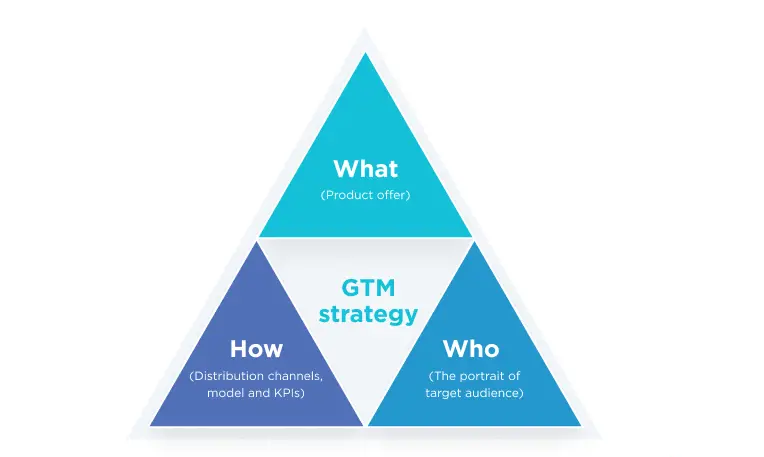What is Go To Market Strategy?
A Go To Market Strategy (GTM) is a plan that outlines how a company will sell its products or services to customers.

Detailed Explanation
For SaaS businesses, a Go To Market Strategy typically includes details about the target audience, the unique value proposition of the product, and the sales and marketing strategies that will be used to reach potential customers. For example, Slack’s GTM strategy involved targeting tech-savvy businesses with a need for efficient internal communication.
Here are the key elements to consider when developing a GTM strategy for a SaaS product:
- Target Market: Identify and understand your target customers. Who are they? What are their pain points? How does your product solve those problems?
- Value Proposition: Clearly define what makes your product unique and why customers should choose your product over others in the market. What value does it provide?
- Pricing Strategy: Determine how you will price your product. SaaS companies often use subscription-based models. Consider factors like cost, perceived value, competitors’ pricing, and customers’ willingness to pay.
- Sales Strategy: Decide how you will sell your product. Will you have a direct sales team, use a partner network, or use a self-service model? How will you structure your sales funnel?
- Marketing and Promotion: Plan your marketing and promotion strategies. How will you generate leads and convert them into customers? This could include content marketing, SEO, social media, email marketing, paid ads, and more.
- Customer Success and Support: Outline your strategy for customer onboarding, support, and success. This is critical in the SaaS business, where customer retention is as important as acquisition.
- Partnerships and Alliances: Consider if strategic partnerships or alliances could help you reach more customers or provide additional services that increase your product’s value.
- Product Delivery and Updates: Since SaaS is delivered online, ensure you have a reliable system for product delivery and updates. Regular feature updates and improvements are a part of the SaaS business model.
- Metrics and Analytics: Define key performance indicators (KPIs) to measure the success of your GTM strategy. Common SaaS metrics include Monthly Recurring Revenue (MRR), Customer Acquisition Cost (CAC), Lifetime Value (LTV), and Churn Rate.
Each of these components requires careful consideration and planning. The GTM strategy should be reviewed and updated regularly based on market feedback and company performance. Understanding the importance of Customer Retention and defining your Unique Value Proposition are some of the crucial elements of a successful GTM strategy.
Why It Matters?
GTM Strategy is crucial for SaaS CEOs and CMOs as it directs the company’s efforts towards reaching the right customers and ensuring product adoption. It’s the road map that aligns all the departments to drive customer acquisition, retention, and growth.
Potential Misunderstandings
A common misunderstanding is that GTM Strategy is only about marketing. In reality, it encompasses marketing, sales, product, and customer success strategies.
Frequently Asked Questions
1. How does a GTM Strategy differ for SaaS businesses compared to traditional businesses?
SaaS GTM strategies often emphasize recurring revenue models, customer retention, and digital marketing channels.
2. Why is a GTM Strategy important for SaaS startups?
For SaaS startups, a GTM strategy helps to identify the ideal customer profile, effectively position the product in the market, and design customer acquisition and retention strategies.
